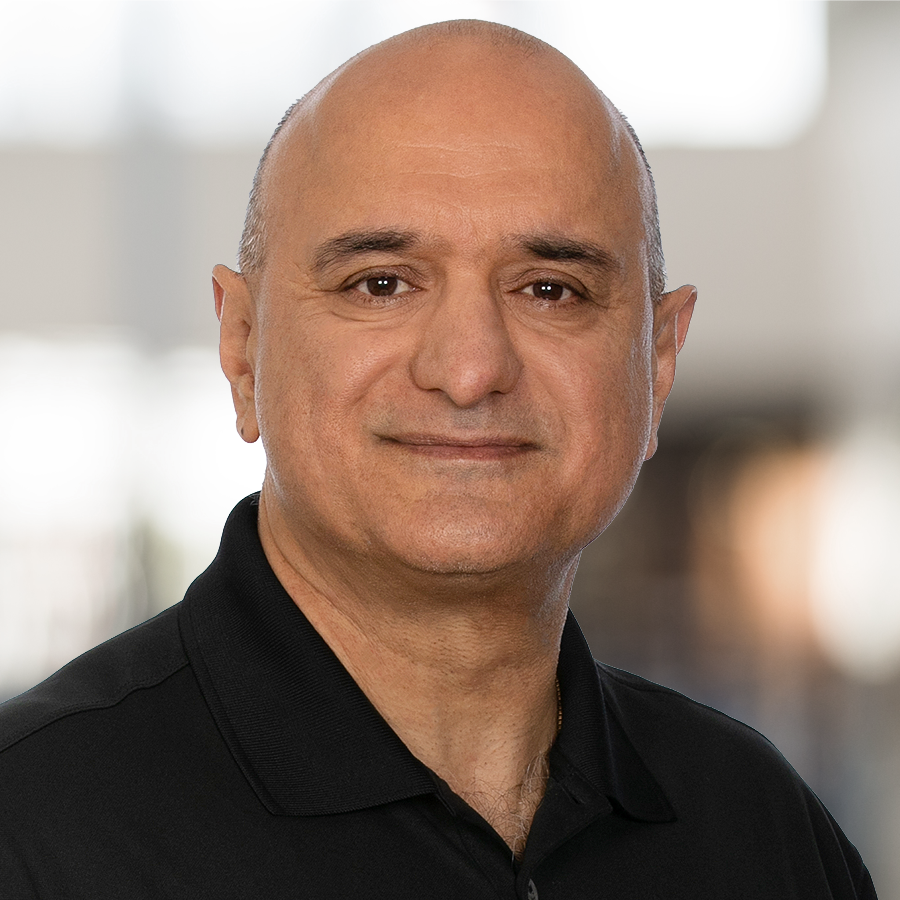A Letter from Ali Salehpour - Climb the Productivity Curve Faster
Senior Vice President Services, Display and Flexible Technology
Few would argue that we are in an era of unprecedented growth at all nodes of chip manufacturing. Semiconductor industry revenues exceeded $419 billion in 2017, and forecasts call for about $450 billion this year. To meet the growing demand from a host of industries with aggressive time-to-market goals, new semiconductor fabs are springing up worldwide, and existing ones expanding.
How Applied Materials helps customers climb the productivity curve faster so they can accelerate time to market is the focus of this issue of Nanochip Fab Solutions.

As Applied Global Services (AGS) VP Jeremy Read notes in a feature on Applied technology-enabled services, “this larger scale and rate of growth make it imperative that fabs operate at peak efficiencies,” adding that it’s our job to help customers “wring every ounce of productivity” from their capital investments.
That’s a job we take very seriously. In the pages that follow, you’ll learn how Applied is delivering an array of advanced services, an expanding network of expert support, and new digital analytic and modeling tools to help you optimize yield, output and cost at every stage of your fab’s life cycle. We’ll also show you how even small changes—like a 1% improvement in a production process— can have a huge impact on your bottom line.
An article on Applied FabOptimizer™, the latest capability from of our FabVantage Consulting group, illustrates the holistic nature of our approach. FabOptimizer combines state-of-the-art simulation and data analysis tools with subject matter expertise to comprehensively address overall equipment efficiency (OEE) loss, including tool and chamber downtime, idle time, rate loss and quality issues.
Our story on Digital Twins discusses this key tenet of smart manufacturing. Digital replicas of physical assets, processes and systems, these represent a significant opportunity to improve quality and throughput, and reduce variability and cost in our industry.
But high volume isn’t the only challenge facing today’s chip makers. More stringent device specifications and safety regulations, particularly in automotive, mean that end customers are demanding zero defects and excursions from their suppliers. A feature by international consultant and author Adele Hars provides a bird’s-eye view of the semiconductor players driving research and innovation in Europe, ground zero for automotive component suppliers—not to mention lighting management, MEMs and power electronics.
On the equipment side, this issue of Nanochip Fab Solutions explores continuing innovation on legacy platforms. Featured articles include Applied’s collaboration with STMicroelectronics to improve yields at the wafer edge on 200mm Mirra™ tools for automotive applications, important advancements in photonics devices created on GaAS substrates or SiC wafers using 150mm—or even 100mm—tools, and synchronization of fab and subfab equipment to enable Industry 4.0 strategies. And there’s still more. An article from our Display group describes their efforts to bring manufacturing efficiencies to the bigger, brighter, better OLED TV displays made possible by Generation 10+ fabrication technology.
Meeting today’s demands for high-volume manufacturing with zero defects makes collaboration essential. To accelerate through the challenging startup and ramp stages, bring products to market faster, and sustain profitable high-volume production, you need a partner committed to helping you climb the productivity curve. Applied is that partner—and we have the tools, experts and advanced services to get you to the top.
